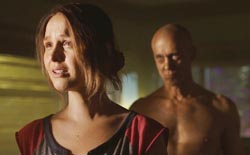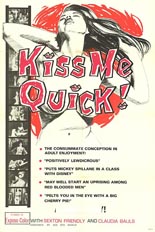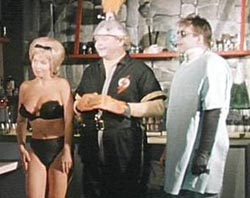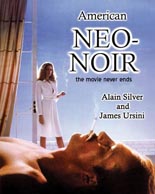
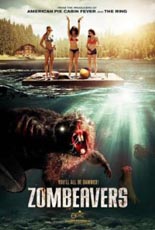 Aren’t you sick of those half-assed, would-be creature features in which the entire experience is the title? You know the ones: Pick one animal from Column A, then another from Column B, and pat ourselves on the back for our “best thing ever” hipsterism, i.e. Sharknado, Sharktopus, Dinoshark, Dinocroc, Pteracuda, Piranhaconda, Sharknado 2, et al.
Aren’t you sick of those half-assed, would-be creature features in which the entire experience is the title? You know the ones: Pick one animal from Column A, then another from Column B, and pat ourselves on the back for our “best thing ever” hipsterism, i.e. Sharknado, Sharktopus, Dinoshark, Dinocroc, Pteracuda, Piranhaconda, Sharknado 2, et al.
Me, too. Well, Zombeavers is nothing like that. Zombeavers is a tool of goodness. For 85 minutes, I felt pure joy. And upon a second viewing, I felt that all over again. It’s a real-deal motion picture — not a time-slot filler that aims no higher than to be a Twitter trending topic. I loved it.
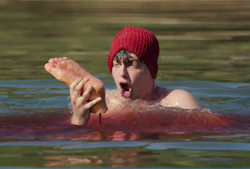 Three sorority sisters (headed by Dumb and Dumber To standout Rachel Melvin) head to a cabin in the woods for a weekend escape. Their respective boyfriends crash the party. And so does a colony of beavers, rendered radiated and mutated by an errant barrel of toxic waste. Leave it to the beavers to spoil the collegians’ trip of tanning bods and guzzling booze and swappin’ spit.
Three sorority sisters (headed by Dumb and Dumber To standout Rachel Melvin) head to a cabin in the woods for a weekend escape. Their respective boyfriends crash the party. And so does a colony of beavers, rendered radiated and mutated by an errant barrel of toxic waste. Leave it to the beavers to spoil the collegians’ trip of tanning bods and guzzling booze and swappin’ spit.
Several aspects keep Zombeavers blissfully afloat, including scene-stealing supporting turns from Rex Linn (TV’s CSI: Miami) and — believe it — white-bread pop singer John Mayer.
But the main reason is that the horror comedy is like a PB&J: It sells both sides. It earns its “Ewww”s for every lost limb and spewed fluid, and yet it never loses sight of being a joke-delivery vehicle — a screamingly funny one at that. No winking at the camera, no has-been cameos, no self-referential BS; following in the muddy, bloody footsteps of Eli Roth’s Cabin Fever, director/co-scripter Jordan Rubin (a writing vet of several years’ worth of MTV Movie Awards) strikes that delicate balance of tone that allows the film to be deliberately campy without becoming a joke itself. —Rod Lott

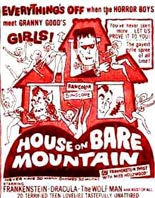
 Very little story exists in
Very little story exists in 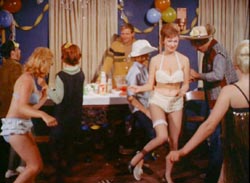
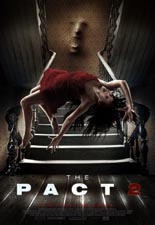
 Part of what made Nicholas McCarthy’s
Part of what made Nicholas McCarthy’s 